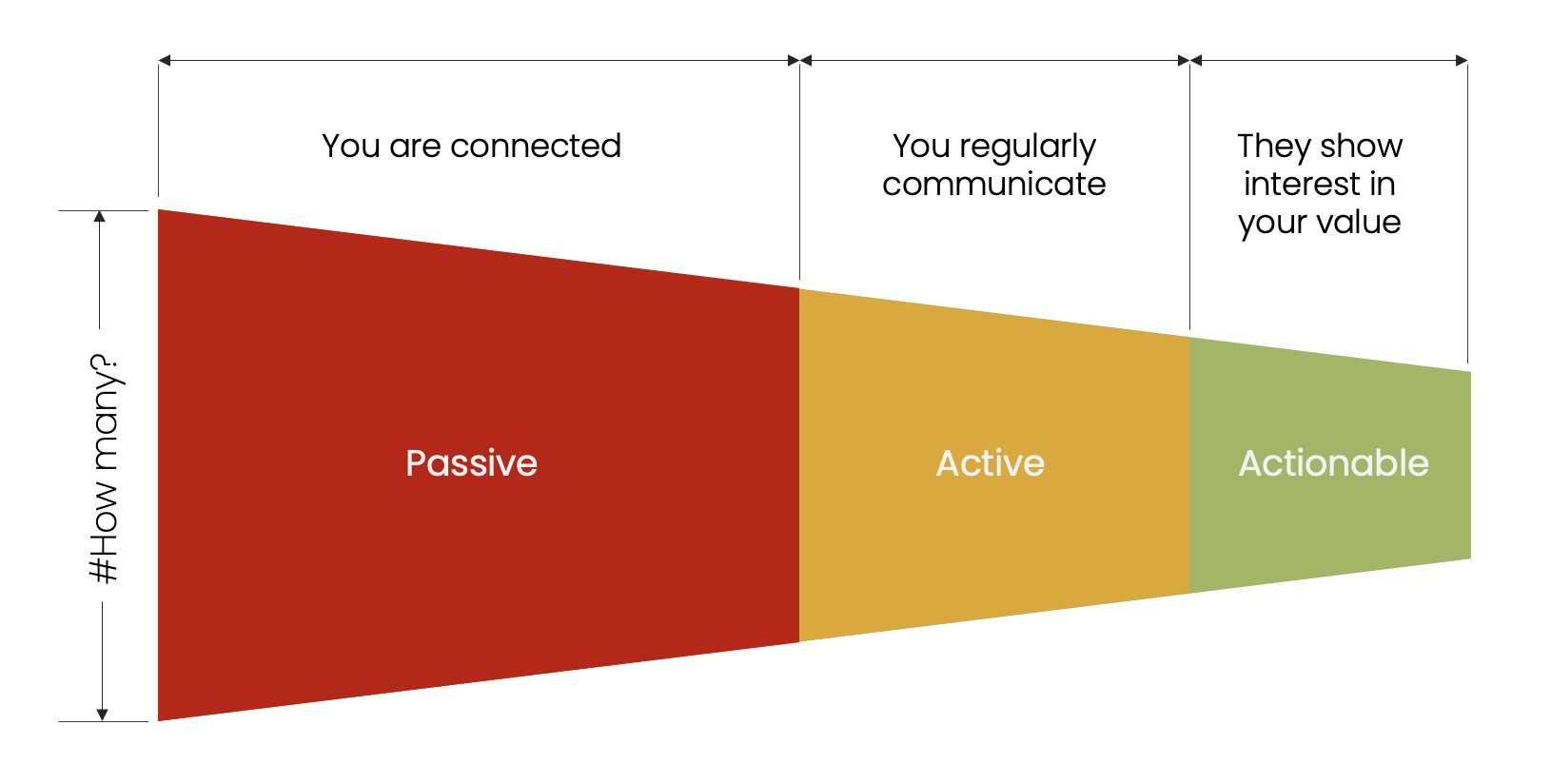The World of B2B Marketing is Going Circular
The B2B Marketing discipline took a battering this year.
Not only did many B2B companies lose the courage to spend on marketing owing to a poor economic outlook – Chat GPT completely changed the game.
Experienced digital marketers and copywriters quickly found their work has lost value as a mechanism to source sales leads.
2024 might look very different, and here’s why.
6-Minute read
Ian C Tomlin
The background
When marketing changed forever
ChatGPT made headlines across the world in 2023 and we all learned a new term “generative” AI.
Armed with tools like Canva, Vyond, Synthesis and ChatGPT, any person with some level of enthusiasm for marketing can produce a pretty convincing guide, white paper and video explainer—no marketing diploma required! Content marketing has been thoroughly democratized, and in some ways that’s a good thing .. but it is a big change.
These factors represent a huge shift in landscape for marketing, leading the smart money to shift from transactional outreach marketing to community of interest value building initiatives.
AI Prominence
With the newfound ease of generating content, it’s inherent value to your audience has disspated. Even your best human authored content is unlikely to reach the surface and stand out. With free access to so much online, it’s almost not a competition anymore.
Reduced SEO Value
Google didn’t do B2B Marketing any favours in 2022 either. When they changed their search algorithms to encourage better results for site surfers, they watered down the importance of organic keywords and devalued of the best toolkits B2B marketers had to bring visibility to their website.
These changes were good for big, reputable, and already well-known brands, but for marketers for startups and smaller brands, the decreased ROI meant it was all bad news.
Difficulty In Qualifying Leads
Even without these industry earthquakes, the task of sourcing marketing qualified leads was already difficult enough. With less than 1 in 10 people wanting to speak to a salesperson, B2B firms have to work harder to evidence their value online.
The ability to demonstrate ‘instant start value’ for products and services makes life easier for some companies equipped to do it. Established SaaS products that can be demonstrated and purchased online in one swift customer journey can be simply justified. However, for companies that have to demonstrate their product offline, or must have a conversation with a customer before presenting an offer, these new rules of marketing are problematic to say the least.
The GDPR Challenges
We should also mention the EU’s General Data Protection Regulation (GDPR) here too.
GDPR has introduced many new outreach barriers. For most they are a benefit. Unsolicited emails and phone calls are easily ignored, dropped into spam or completely blocked.
Reaching out is however, much more of a challenge if you are cold calling and managing your contacts can be much more risk infused.

Transactional marketing outreach doesn’t work. What next?
Practically every B2B marketing leader I know that doesn’t have the means to instantly satisfy customers with resources on their website is having difficulty in generating sales leads.
‘Ah,’ you say, ‘There are plenty of lead generation companies on LinkedIn and advertising online, why not use one of them?’ Easy answer. They don’t work, or, at least, if they can work, you should already be doing it yourself.
My conclusion is that marketing outreach doesn’t work. Indeed, if the 2023 version of a marketing engine does work at all, it’s a sadly nourished poor cousin of the muscle-bound teeth-glinting sales lead generation engines of 1980, 1990, and indeed 2000.
Marketing has become ever-more transactional. When you invest in a point-specific email or LinkedIn outreach campaign, or an event… or ad campaign., etc., it’s a moment in time. Either it hits, or it doesn’t. Mostly, it doesn’t. Your marketing spend is having to do ALL of the heavy lifting.
But then, adversity is the birthplace of creativity. With the ‘cold marketing outreach’ door definitely shut, marketers are looking at new approaches problem solvers can use to find solution seekers.
You might think I’m going to launch into something about technology and AI, given the last two decades have made most of us assume anything in the world can be solved with an app and we’ve become ever more hungry for the next best app option. But no! The future of marketing is not whizzy software, it’s about winning your battle for communities of interest you care about.

Story Time
In late September 2023, I was at the Bloomberg Technology Summit in London. It was a typically miserable weather day in London. On arrival, I spotted the croissants and hot coffee and the draw was too great. Having equipped myself with my ‘recovery kit’ I went in search of somewhere to put my coffee down. The event networking area was scattered with bar tables and stools.
There was one that was largely free of delegates and headed across. I asked the sole user of the table I’d selected if I could perch next to him to touch down my coffee while I scoffed my croissant. He kindly agreed.
Moments later, a large Scottish man appeared at my shoulder. Without much tact, he charged into his sales pitch and my fellow coffee drinker had nowhere to hide. His exhausted reaction to this explosion of an elevator pitch was easy to spot. We have all been there, I simply smiled at him in support.
My newfound acquaintance offered a simple explanation that ‘it wasn’t him’ the salesman needed to speak to and, to move the conversation along, asked me who I was and what my interest was for attending the event, kicking off a long conversation with my new “best friend.”
This story serves as an example for the attitude we must adopt in the new age of marketing. With an onslaught of heavy handed communications fuelled by AI. It’s more valuable now than ever to have permission to approach potential buyers. This is why sellers need to become a part of the communities they serve.
Transactional versus Circular Marketing
For over 4-decades, the vast majority of B2B marketing spend has gone into fishing for sales leads through a largely transactional outreach approach. You spend the money, and it is consumed instantly by marketing agencies, digital advertising, event organisers, etc. Within a few weeks of your investment, the money in burned. If you haven’t converted spend into sales leads, nothing will bring that asset back.
For suppliers of products and services, if you are a member of your community of interest and you share an objective to achieve the same outcomes as your fellow members, you will create trusted sustaining relationships that give you ‘permission’ to sell. Becoming a known and value-adding brand in your community of interest means you have many more opportunities to ‘be in the room’ and express your value when prospects surface their job challenges and buying needs.
For marketers, winning the hearts and minds of communities of interest is where the new battle for sales leads will come from. Gone are the days of spray and hope transactional marketing. With modern circular marketing, any investment into communications activities is not instantly burned, but converts into community goodwill, new contacts, relationship credentials …and trust.
Circular marketing offers an ‘ingredient-X.’ Successive marketing investments build, creating 1+1=4 value. As members join, your audience grows and those members invest their own resources to build new value without your marketing budget being touched!

Final thoughts
With the shift in the climate for marketing, it seems clear to me that the way to keep a consistent flow of sales leads and satisfy your current customers is to build a deeper relationship with your community.
Ask yourself:
1. Are you fully leveraging your communities of interest?
2. Do know the size of your passive, active and actionable audiences?
3. Do you have a strategy to WIN in the battle for communities?
If you don’t have the answers to these questions, you need to get moving with your circular marketing agenda. Otherwise, your competitors will be stealing your lunch in 2024.
